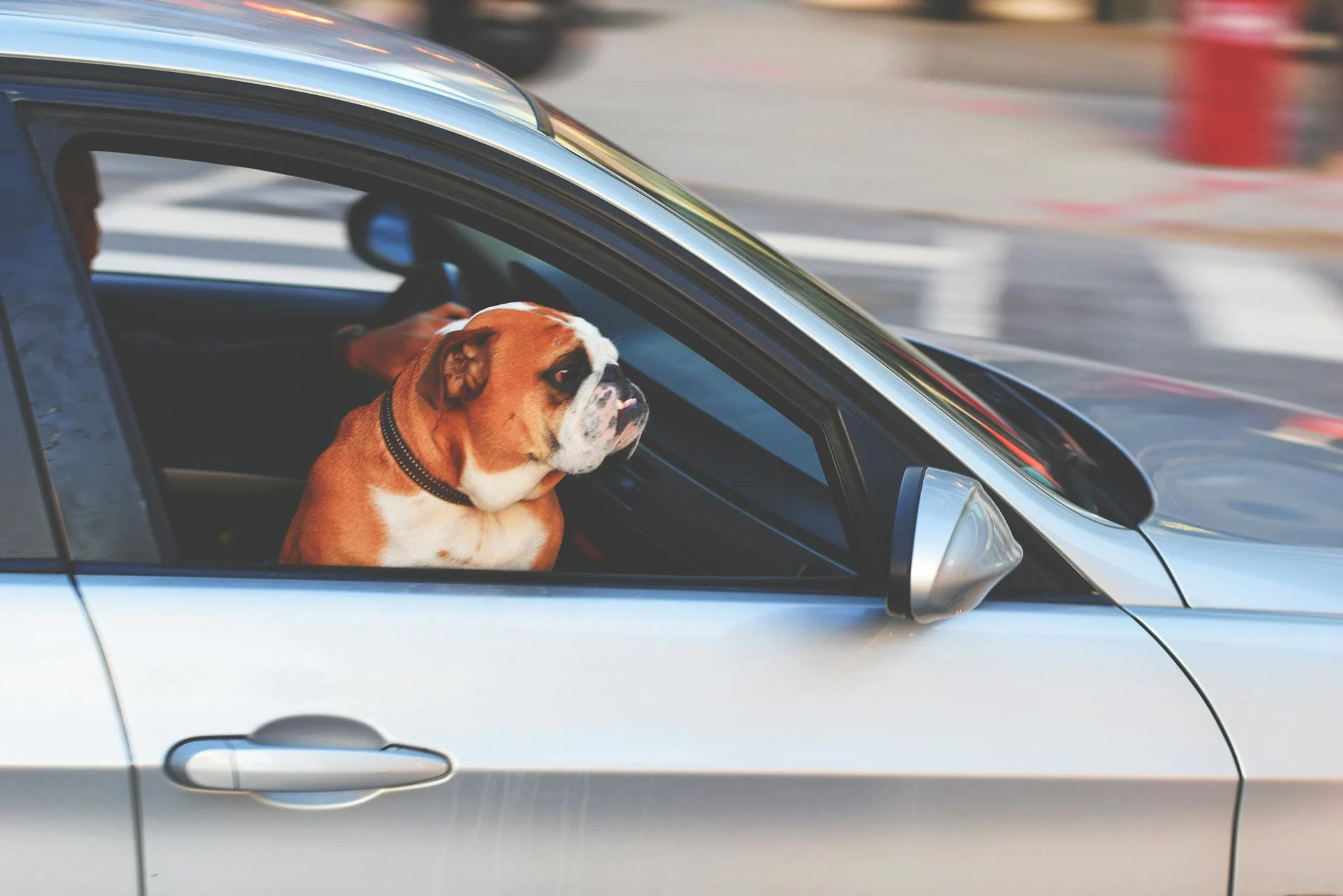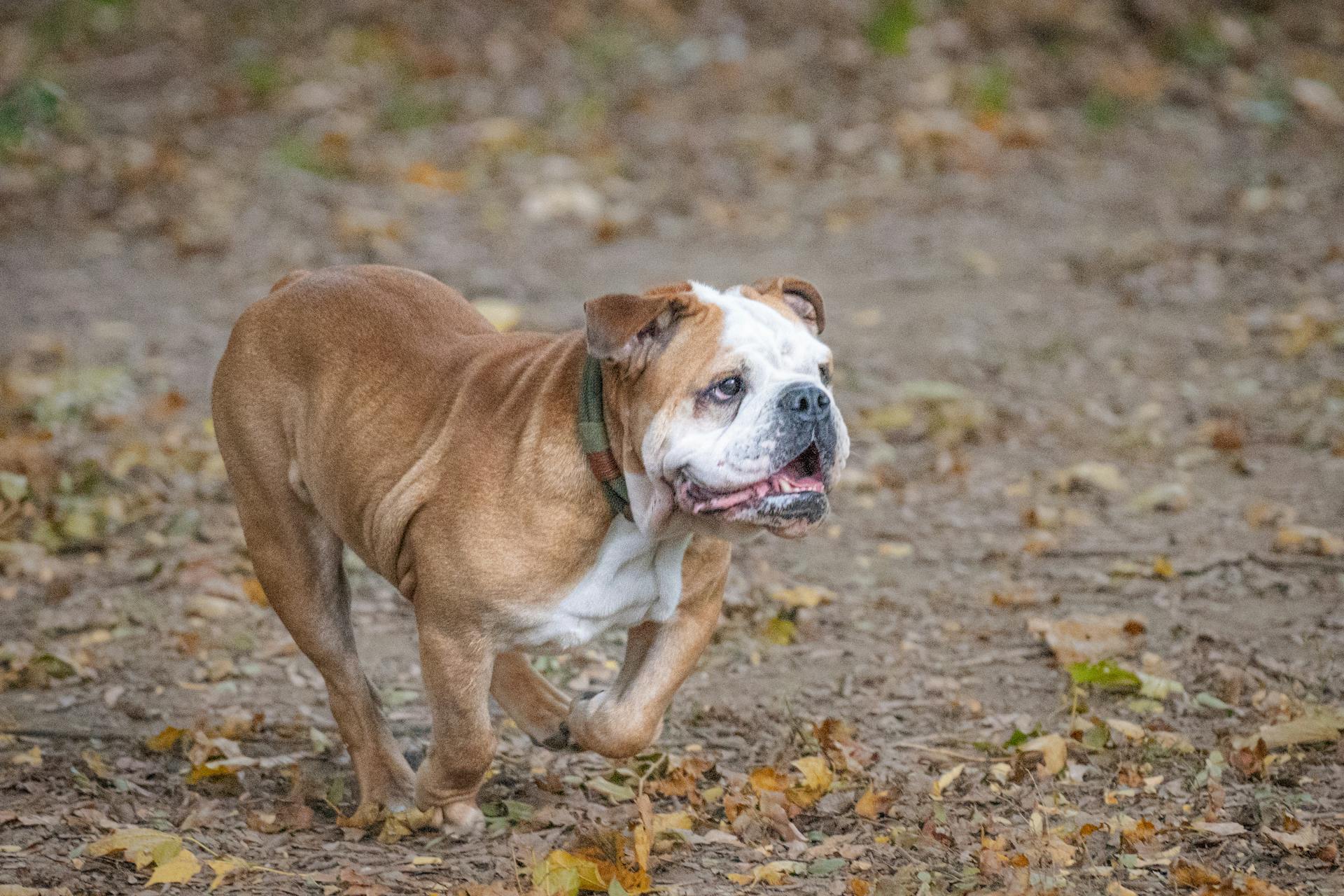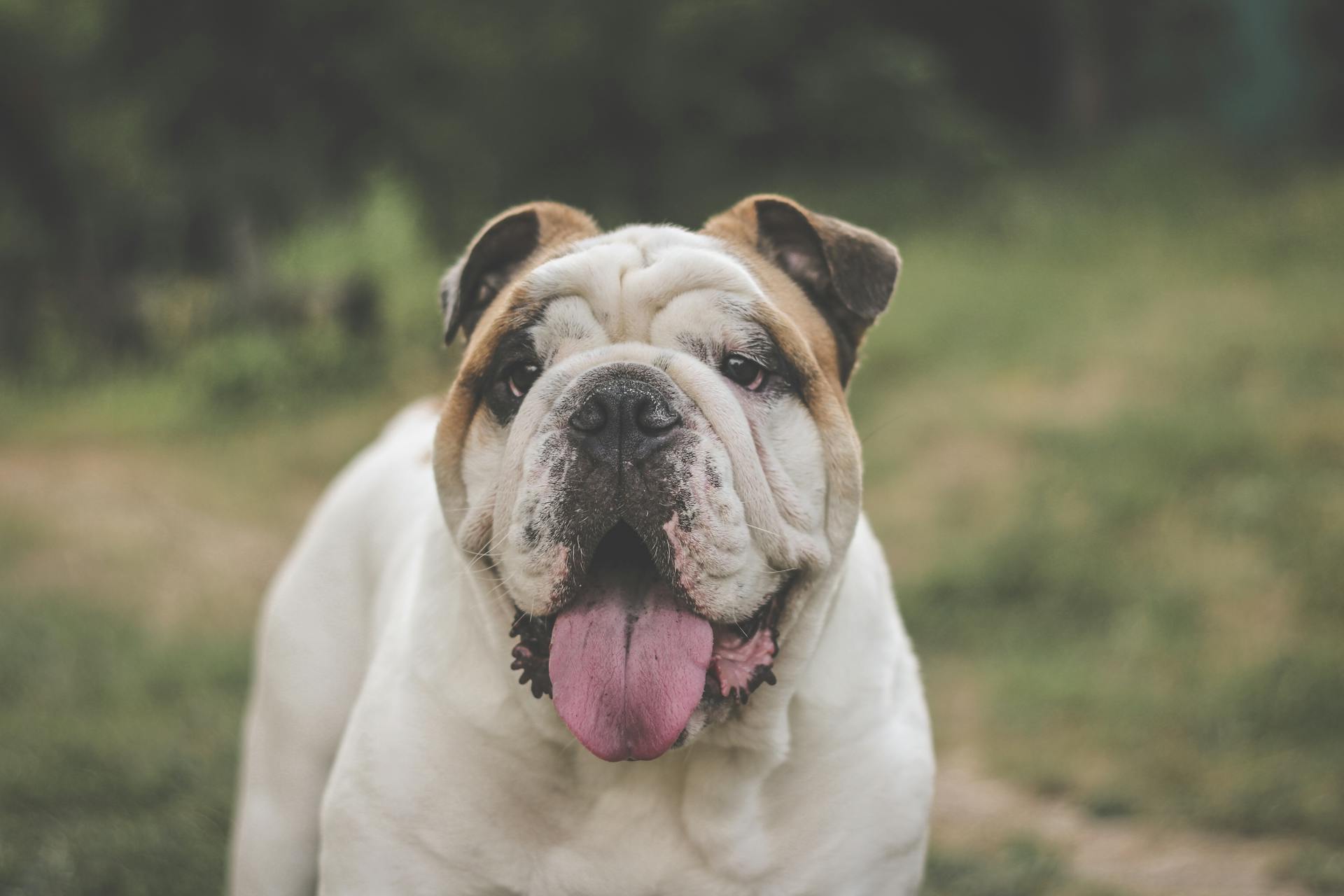
English Bulldogs are not built for cold weather, and their short coats don't provide much insulation.
They can quickly overheat in warm temperatures, so it's not a matter of just bundling them up in cold weather.
Their flat faces and short noses make breathing difficult, especially in cold air, which can lead to respiratory issues.
English Bulldogs need to be protected from the cold, and owners should take precautions to ensure their safety and comfort.
Understanding English Bulldogs in Cold Weather
English Bulldogs are a brachycephalic breed, which means they have short noses and flat faces that can make breathing in cold air more difficult. Their short coat also offers limited insulation against the cold, making them more sensitive to lower temperatures than breeds with longer snouts and thicker fur.
Bulldogs need extra care in cold weather to stay safe and comfortable. A warm coat or sweater can provide the extra warmth they lack, but it's essential to choose items that don't restrict their movement or breathing.
On a similar theme: English Bulldog Breathing Heavy
To protect your Bulldog during winter, provide them with a warm coat or sweater for outdoor activities, and ensure a warm, draft-free sleeping area indoors. Limit their time outside in cold weather and watch for signs of discomfort or shivering, which indicate they need to warm up.
Rain, slush, and snow can all be hazards for Bulldogs in cold weather. Wet paws can cause bacterial buildups between the toes, and icy particles can build up in the fur around their paw pads, leading to discomfort. Snow with extra cold temperatures can burn or dry out a dog's paw pads, so limit exposure during super cold times.
Some pets may be more susceptible to frostbite than others, and conditions like Heart Disease, Diabetes, age, size & overall health can predispose a pet to this painful & debilitating condition. Symptoms of frostbite in dogs include pale discoloration, pain when touched, and cold or brittle feeling when touched.
Preparing Your Bulldog for Winter
Bulldogs are not naturally suited for low temperatures, so it's essential to take proactive measures to protect them from the cold.
To ensure your Bulldog's safety in cold weather, provide them with a warm coat or sweater for outdoor activities.
A sheltered area where your Bulldog can relieve themselves without prolonged exposure to cold is beneficial.
You should limit your Bulldog's time outside in cold weather and watch for signs of discomfort or shivering, which indicate they need to warm up.
Here are some key things to keep in mind:
- Limit the time your Bulldog has to spend outdoors in winter's cold temperatures.
- Keep your Bulldog indoors, except for short potty breaks.
- Equip your Bulldog with a weatherproof dog jacket for winter or suitable dog boots.
- Keep walks short, and keep your furry friend moving.
- Dry your Bulldog as soon as possible, in case they get wet in cold temperatures.
- Make sure your Bulldog has a warm, clean, and cozy place to sleep.
Maintaining a comfortable indoor environment during winter is vital for Bulldogs. Ensure a warm, draft-free area for them to sleep and relax, and be mindful of indoor humidity levels, as dry air can exacerbate respiratory issues.
Regular Exercise Importance
Regular exercise is crucial for English Bulldogs, especially in cold weather. They need regular exercise for their overall health.
Bulldogs need short, frequent walks during colder months to avoid prolonged exposure to cold temperatures. This is a better approach than taking them on long walks in harsh weather.
Indoor play can supplement their physical activity and protect them from the cold. By doing so, you can ensure they stay active while staying safe.
Explore further: English Bulldog Exercise
Mental and Social Well-being

English bulldogs are social animals that need interaction and mental stimulation, just like people do during the winter months. They thrive on attention and affection from their human family.
Indoor activities are a great way to keep your bulldog engaged and entertained during cold weather. Puzzles and playtime can help prevent boredom and winter blues.
Regular playtime is essential for bulldogs, and it doesn't have to be a lot - even short sessions can make a big difference.
Protecting Your Bulldog
To protect your Bulldog from the cold, provide a warm coat or sweater for outdoor activities. Limit their time outside in cold weather and watch for signs of discomfort or shivering.
You should also ensure a warm, draft-free sleeping area indoors. This is especially important for Bulldogs, who can be sensitive to cold temperatures.
To keep your Bulldog's paws protected from the cold, consider using booties or wiping off their paws with soap and water or dog wipes after outdoor activities. This will help prevent damage and frostbite.
You might like: English Bulldog Licking Paws
Be sure to dry your Bulldog's paws thoroughly after an outing, especially if you've been in an area where salt or other ice deterrent chemicals have been used. This will help reduce the risk of bacterial growth and inspect for any possible cuts or wounds.
If your Bulldog does suffer a cold-related paw injury, use a wound spray like Healers Wound Cleanser to help disinfect the area and promote healing. You can also use gauze pads to keep the wound clean and medicated.
Recognizing Health Issues
Bulldog owners should be vigilant for signs of cold-related health issues, such as excessive shivering, lethargy, or reluctance to engage in everyday activities.
A dog's normal body temperature is anywhere from 99.5 to 102.5°F (38.3 to 39.2°C), so if your bulldog is shivering, they are already too cold.
If your bulldog is too cold, they may shiver, have a hunched posture, and lift or hold their paws off the ground.
Here are some common signs that your bulldog is too cold:
- feel unwell, tremble and walk slowly
- take a cramped posture
- cuddle on your leg or on another heat source
If you suspect your bulldog has a cold, look out for signs like runny nose or congestion, sneezing, coughing, fever, watery eyes, and lethargy.
Risk Factors
Recognizing Health Issues often requires understanding the specific risks that certain breeds face. For Bulldogs, one major concern is their limited coat, which doesn't provide enough warmth in cold weather.
In cold climates, Bulldogs are prone to hypothermia due to their lack of a thick coat. This is a serious issue that can quickly escalate into a life-threatening situation.
Their brachycephalic nature also puts them at risk, as their respiratory system can struggle in cold, dry air. This can lead to breathing difficulties and other respiratory problems.
Bulldog owners living in colder regions need to be aware of these risks and take steps to protect their pets.
Addressing Health Concerns
As a dog owner, it's essential to be aware of potential health concerns that can arise during the winter months. Bulldogs, in particular, are prone to respiratory issues and should be monitored closely for signs of cold-related health issues such as excessive shivering or lethargy.
You might like: English Bulldog Health Issues

If you notice any serious concerns, seek immediate veterinary care. Bulldogs with pre-existing health conditions, especially respiratory issues, need extra attention during winter.
Some dog breeds are more sensitive to cold temperatures than others. Small dogs, short-haired and hairless dogs, puppies, senior dogs, and dogs with medical or heart conditions are all more vulnerable to the cold. Additionally, dogs with arthritis and joint problems, as well as certain breeds like Dobermen, Boxers, and Greyhounds, should also be taken extra care of during winter.
To determine how cold is too cold for your dog, consider their size. Paws, nose, ears, and the stomach region are generally unprotected and sensitive in all dogs. Apply paw balm before going for a short walk outside and remove dirt when returning home to keep your dog's paws healthy.
Here are some dog breeds that are particularly sensitive to cold temperatures:
- Small dogs
- Short-haired and hairless dogs
- Puppies
- Senior dogs
- Indoors ‘pet’ dogs
- Dogs with a medical or heart condition
- Dogs with arthritis and joint problems
- Dobermen, Boxers, and Greyhounds
Signs Your Dog Is
Your dog has a few ways to tell you they are too cold to be outside. Shivering is one of the first signs, so if you notice your dog shivering, it's already too cold.
A hunched posture can also indicate that your dog is too cold. If you notice your dog walking slowly or having trouble moving, it could be a sign that they're feeling the chill.
In extreme cases, hypothermia is possible. Lethargy, muscle stiffness, weakness, decreased mental alertness, and even loss of consciousness are all signs of hypothermia.
Here are some other signs to look out for:
- Feel unwell, tremble and walk slowly
- Take a cramped posture
- Cuddle on your leg or on another heat source
These signs can indicate that your dog is too cold and needs to come inside.
Frequently Asked Questions
Can my English Bulldog get a cold?
Yes, English Bulldogs can catch colds, just like humans, with symptoms including nasal discharge, labored breathing, and lethargy. If you suspect your Bulldog has a cold, learn more about the causes, symptoms, and treatment options to keep them comfortable and healthy.
Sources
- https://iheartdogs.com/are-bulldogs-safe-in-cold-weather/
- https://www.dailypaws.com/dogs-puppies/dog-safety-tips/how-cold-is-too-cold-for-dogs
- https://k9apparel.com/products/english-bulldog-dog-winter-coat
- https://www.healerspetcare.com/blogs/news/how-cold-weather-impacts-dogs-paws
- https://tractive.com/blog/en/safety/tips-for-dogs-and-cold-weather-in-winter
Featured Images: pexels.com


